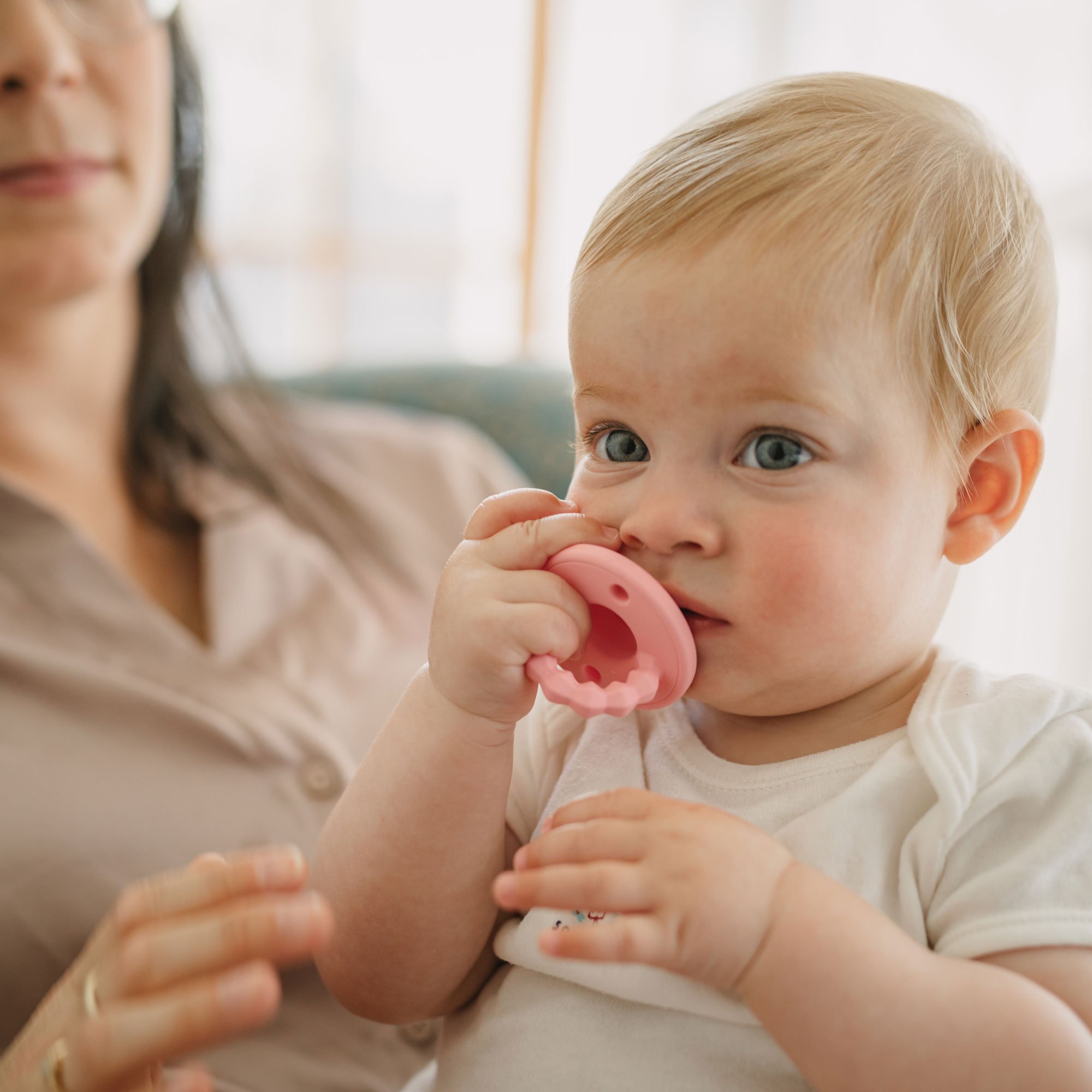An upper lip tie restricts a baby's upper lip movement, making it challenging to latch and feed effectively. This can negatively impact weight gain and overall health.
In addition, a tight upper lip tie may lead to painful biting during breastfeeding.

What is Upper Lip Tie in Babies?
Upper lip tie is a condition where the tissue connecting the upper lip to the gums (labial frenulum) is either too tight or too short.
All babies have some tissue in this area, and medical definitions of what is considered normal or "too tight" are not well-established yet.
Most lip ties resolve themselves as the baby grows older. In many cases, they're completely gone by the time a child's canine teeth start to grow.
There's also a frenulum under your baby's tongue. When this frenulum is too tight, it limits tongue movement, a condition known as tongue-tie.
Both conditions can make breastfeeding a challenge. Some of the difficulties may include:
- Pain when breastfeeding
- Damage to your nipples
- Development of engorgement, blocked ducts, or mastitis
- Possible deformation of the nipples
- Problems with your milk supply, either too much or too little
How to Flip Upper Lip for Breastfeeding
One of the common challenges faced by mothers of babies with upper lip tie is how to flip the upper lip over the nipple while breastfeeding. Below are some techniques you can try:
- Gentle Pressure: Apply gentle upward pressure on the baby's upper lip while they are latching. This can help stretch the frenulum and encourage the lip to move.
- Finger Assist: Use your finger to lift the baby's upper lip over the nipple gently. This can be especially helpful during the initial latch.
- Different Latch Positions: Experiment with different breastfeeding positions, such as the football hold or laid-back position. These positions can make it easier for the baby to latch.
- Nipple Shields: Specialized nipple shields are available for mothers whose infants face nursing difficulties but consult with a lactation expert before using one.
Lip Tie and Bottle Feeding: What to Look Out For
While lip tie is more commonly associated with breastfeeding difficulties, it can also impact bottle feeding. Some signs to watch for include:
- Poor Latch: Baby may struggle to maintain a good seal around the bottle nipple.
- Slow Weight Gain: Inefficient feeding can lead to slower weight gain.
- Frequent Breaks During Feeding: Baby may take frequent pauses or become frustrated during feeding sessions.
Signs of Lip Tie During Bottle Feeding
In addition to the general signs mentioned above, specific bottle-feeding cues of lip tie include:
- Milk Leaking from the Sides of the Mouth: This indicates a poor seal around the nipple.
- Gassiness: Inefficient feeding can lead to increased gassiness.
- Baby Getting Frustrated During Feeds: Signs of frustration like crying or fussing can be a sign of feeding difficulties.
Lip Tie in Newborns: Identifying the Condition Early
Identifying lip tie early on is crucial for tackling potential feeding issues and preventing long-term complications. Here are some tips for spotting a baby upper lip tie:
- Visual Inspection: Look for a tight, restrictive band of tissue connecting the upper lip to the gumline.
- Observe When Eating: Pay attention to your baby's feeding behaviors, such as difficulty latching, slow feeding, or excessive fussiness.
- Consult a Healthcare Professional: If you suspect your baby has a lip tie, consult with a pediatrician or lactation consultant for a proper diagnosis.

Infant Upper Lip Tie: Diagnosis and Treatment Options
Upper lip tie in babies can be diagnosed by a healthcare professional through a physical examination of the baby's mouth. Treatment options may include:
- Lip Tie Revision: A minor procedure a qualified healthcare provider performs to release the tight tissue.
- Stretching Exercises: Gentle stretching exercises can help improve the mobility of the upper lip.
Before you take any drastic steps, it’s important to consult your pediatrician or a lactation consultant. With early diagnosis and appropriate treatment, considerable improvements can be made.
Lip Tie and Pee in Diapers: What’s the Connection?
One often overlooked symptom of a potential upper lip tie is a change in your baby's diaper output.
When a baby can't latch effectively or has trouble sucking, they may not be getting enough milk. This can lead to fewer wet diapers, as their body isn't producing as much urine.
Fewer wet diapers can be a sign of various issues, including dehydration. It's important to consider a lip tie as a potential cause, especially if you've noticed other feeding difficulties.
If you're concerned about your baby's feeding or diaper output, it's crucial to consult with a healthcare professional for proper evaluation and guidance.
Frequently Asked Questions (FAQ)
How do I know if my baby has a lip tie?
Common signs include difficulty latching during breastfeeding, poor bottle feeding, slow weight gain, or excessive fussiness during feedings.
Can my baby outgrow lip tie, or does it need treatment?
In some cases, a baby may outgrow a mild lip tie, but severe cases often require treatment to improve feeding and reduce discomfort.
Is lip tie only a concern for breastfeeding?
No, lip tie can affect both breastfeeding and bottle feeding by causing feeding difficulties due to restricted lip movement.
